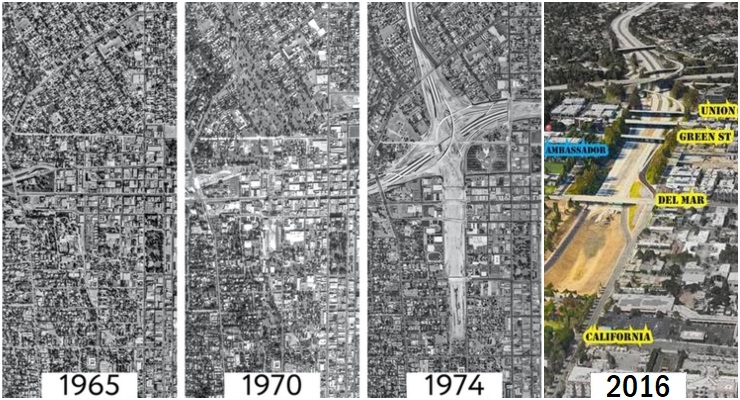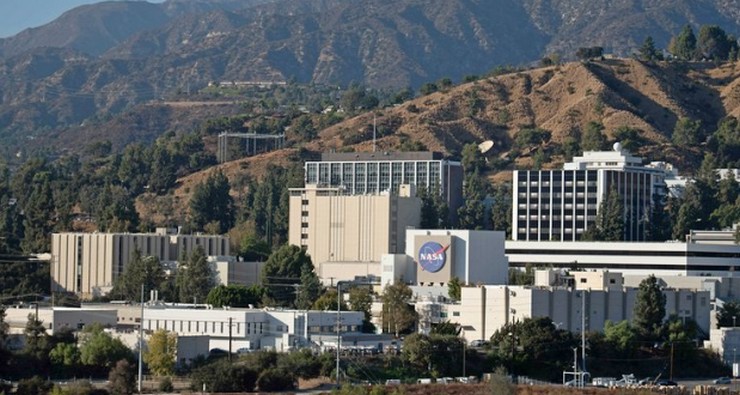
Determining the chemical formula of a protein is fairly straightforward, because all proteins are essentially long chains of molecules called amino acids. Each chain, however, folds into a unique three-dimensional shape that helps produce the characteristic properties and function of the protein. These shapes are more difficult to determine (or “solve”); scientists traditionally do so using a technique called X-ray crystallography, in which X-rays are shot through a crystallized sample and scatter off the atoms in a distinctive pattern.
This spring, Caltech students had the opportunity to use the technique to solve protein structures themselves in a new course taught by Professor of Chemistry André Hoelz.
Although the Institute has a long history in the fields of structural biology and X-ray crystallography, the chance to get hands-on experience with the technique is rare at most universities, Caltech included. Indeed, the method is more commonly performed at specialized facilities with high-energy X-ray beam lines, including the Stanford Synchrotron Radiation Laboratory (SSRL). However, in 2007, thanks to a gift from the Gordon and Betty Moore Foundation, Caltech opened the Molecular Observatory—a dedicated, completely automated radiation beam line at SSRL.
“The Molecular Observatory gives us lots of beam time,” notes Hoelz. “Recently, I also received a grant from the Innovation in Education Fund from the Provost’s Office that was matched by the Division of Chemistry and Chemical Engineering, and this allowed me the opportunity to develop this course and train students in a way not commonly found at universities.”
In the new course, “Macromolecular Structure Determination with Modern X-ray Crystallography Methods” (BMB/Ch 230), Hoelz’s students have been using the Molecular Observatory and other on-campus crystallization resources to solve the structures of various proteins, in particular, variants of green fluorescent proteins (GFPs)—proteins that exhibit bright green fluorescence under certain wavelengths of light. “These proteins are crucial tools in biology because they can be visualized by fluorescence techniques. It’s important to know their physical structure, because it affects the intensity and wavelength at which the protein fluoresces,” says Anders Knight, a first-year graduate student studying protein engineering with Frances Arnold, the Dick and Barbara Dickinson Professor of Chemical Engineering, Bioengineering and Biochemistry, and one of nine students—including two undergraduates—in the inaugural class.
During the first few weeks of the course, students determined the proper conditions—the pH levels and the mix of salts and buffer solutions—that are required to get a protein to crystallize. These conditions vary from protein to protein, making it tricky to “grow” perfect single crystals of the proteins. “Most of the ones we are working with have known 3-D structures, and they crystallize relatively easily, so they are a great place to start learning about the technique of X-ray crystallography,” Knight says. “But some of us were also given protein variants that had never been crystallized before.”
Once the students crystallized their proteins, single crystals were mounted in tiny nylon loops that are attached to small metal bases, frozen in liquid nitrogen, and loaded into pucks that were shipped to SSRL. There, the pucks were loaded into a robotic machine—remotely controllable from Caltech and operated by the students—that placed them, one by one, into a powerful X-ray beam. X-rays are scattered at characteristic angles by the electrons within the crystallized samples, generating a diffraction pattern that can be converted into a so-called electron-density map, which is then used to determine the 3-D location of all of the atoms.
“The electron density map doesn’t exactly show you what the protein’s structure is,” Knight says. “You do have to correctly interpret the electron density map to determine where the protein’s atoms will go. It’s difficult, but this class is designed to give us practice doing that. Collecting data at SSRL was a great learning experience. It was interesting to be able to accurately mount and position the crystals—each smaller than a millimeter—on the beamline from hundreds of miles away. The data collection went fairly quickly, taking around eight minutes.”
For their final assignment, students will write a mock journal paper about their methods and the final protein structure. Most of the structures had been determined previously, but one student did solve a previously unknown GFP structure, a bright red fluorescent protein called dTomato.
“dTomato is a product of directed evolution in protein engineering, created by subjecting its parent, DsRed, through several rounds of random genetic mutations,” says Phong Nguyen, a graduate student in the lab of Doug Rees, Roscoe Gilkey Dickinson Professor of Chemistry and Howard Hughes Medical Institute Investigator, and the student who solved the structure of dTomato in Hoelz’s class. “By solving its structure, we can see how directed evolution—a method developed by Frances Arnold to create new proteins using the principles of evolution—changed the protein from its parent. Specifically, we are able to explain how individual mutations contributed to the structural outcome of the protein and consequently to differing chemical and physical properties from the parent. We all are so excited to solve a new structure and contribute knowledge to the field of GFP protein engineering.”
“Having the Molecular Observatory at Caltech allows us to train students with very sophisticated technology,” says Hoelz, who is now envisioning a second, related course. “Students would learn recombinant protein expression and purification, directly prior to this course, so they can purify the proteins themselves with cutting-edge technology and then go on to determine their 3D structure by X-ray crystallography,” he says.
“In my opinion, learning by doing is the best way to master how to determine crystal structures and this new course will solidify the strong roots Caltech has in X-ray crystallography,” Hoelz adds. “Not only will this new course accelerate the otherwise slow learning process for this technique, but it will also allow non-structural biology laboratories on campus to determine crystal structures of their favorite proteins using Molecular Observatory, a unique and spectacular facility at Caltech.”













 0 comments
0 comments


